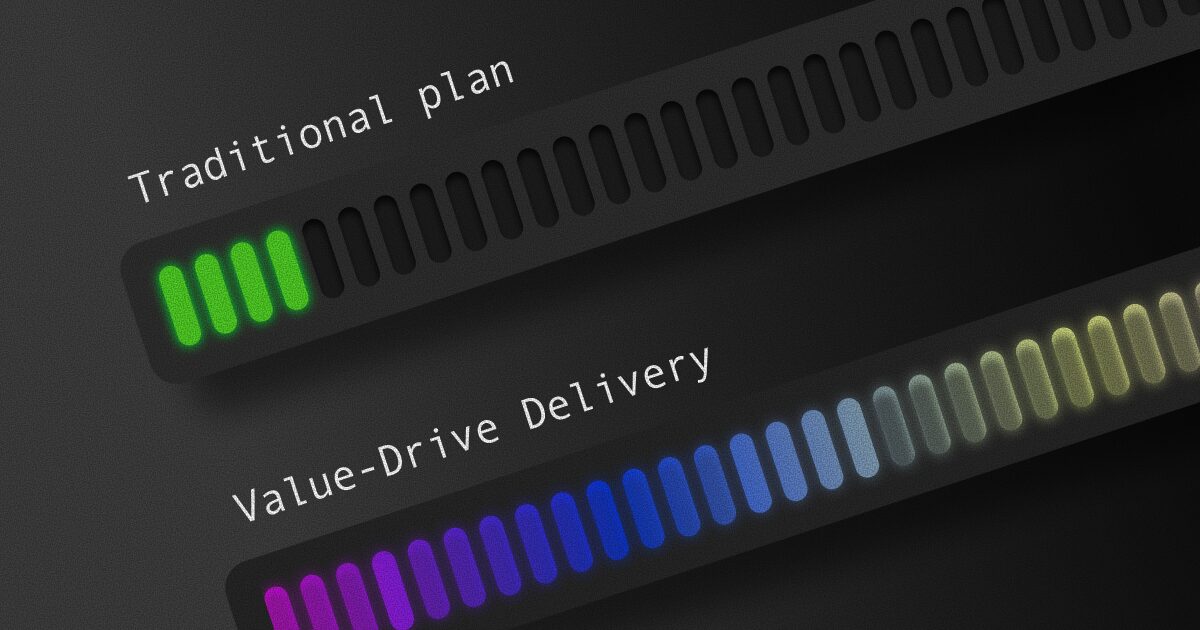April 28, 2025 - 5 min
Enterprise Software Testing: The Key to Smarter Growth

Enterprise software testing is becoming the foundation of success for any serious software company. Enterprise applications, such as enterprise resource planning (ERP), customer relationship management (CRM), human resources management (HRM) and other business systems, support key processes, connect departments and enable the daily functioning of large organisations.
For these complex applications to carry out their objectives, you need to have an established and well-structured software testing process. Only this way can these apps provide full service to their end users and ensure full reliability and stability.
Let’s learn out more about this topic and dig into what the challenges but also best practices are when it comes to testing enterprise software.
What Is Enterprise Software Testing Exactly?
Enterprise software testing includes comprehensive testing of large software systems with the aim of checking functionality, security, performance and user satisfaction. In contrast to the testing of smaller applications, these are systems that connect multiple departments, often operate globally and must meet strict regulatory requirements.
Also, any mistake can cause serious financial losses, business interruptions or damage to the company’s reputation. In our work, we often see how important it is that all parts of the enterprise system are flawlessly connected and tested. Because one failure can have large-scale, chain consequences.
Key Types of Testing in Enterprise Environments
1) Functional testing. This testing type checks whether all functionalities work according to the specifications of the app in question. So before the product gets pushed into production, functional testing checks the system features, and makes sure they all work as they should. Within functional testing, and talking about enterprise environment, there are two main methods: unit and integration testing.
- Unit testing. Method that has the goal to test code at the unit level, which makes sure that the overall code design is higher quality and more modular.
- Integration testing. Tests the mutual cooperation of various modules and external systems. We often work on projects where ERP must be connected to legacy systems or cloud services.
1) Non-functional testing. Unlike functional testing, which checks the system’s functional aspects, non-functional testing checks system characteristics such as performance, security, usability, and scalability. In enterprise software testing, the most common methods are performance, security, and usability testing.
- Performance testing. This testing method tests software under a certain type of load, such as number of users or, for example, high data amount, and so on. In other words, it tests the software’s performance based on 4 key aspects: speed, scalability, response, and stability.
- Security testing. Is your software vulnerable or susceptible to potential attacks or unauthorised access? Does it check all the boxes when it comes to protecting sensitive data, for example, those that are related to GDPR? In an enterprise environment, security is not an option, but an obligation.
- Usability testing. This testing type has the objective to check and evaluate what the usability score is and how intuitive your software is.

Different Methodologies & Approaches
Manual testing and automated testing are the two fundamental methods. Manual testing is indispensable for research testing and evaluation of user experience. On the other hand, automated testing is crucial for regression, load and performance testing to make sure speed and repeatability are on point. However, what keeps proving to be the best method is combining both of these two. Automated testing saves you time on repetitive tasks, and is in general more exact, but manual testing can often discover minor issues that automation might miss.
Agile and DevOps as two complementary practices that enable continuous testing. And this means that the process, in this case the enterprise software testing process, is present throughout the entire development cycle. Since we’re talking about enterprise software, this also involves complex code that requires frequent changes and updates. That’s why, by applying Agile and DevOps methodologies, we can run tests automatically after making changes in code, which reduces the risk of unexpected errors in later stages.
We can’t go without mentioning TDD, a.k.a. test-driven development. This process code has the task of writing tests before code, which ultimately leads to an increase in product quality and delivery. TDD has also helped us detect errors on time, better said, even before the ‘time was up’. And this has led to the prevention of higher costs when fixing the code — you guessed it — in the later phase of the project.
Challenges with Enterprise Software Testing
Complex code integration. Enterprise systems often integrate multiple applications and external services. Any change can have a real domino effect on the entire ecosystem. One of the major challenges is to make sure that updates in code in an enterprise system don’t spill over and affect other apps that make part of it.
Security & compliance. It’s necessary to test data protection and compliance with regulations (GDPR, HIPAA, etc.). Does the software that you’re testing cover all potential vulnerabilities, privacy-related controls without exposing user data of your users? This is something to always bear in mind when working on such large-scale projects.
Scalability. Systems must support thousands of users and large amounts of data. It’s natural that enterprise software products grow, but that also brings scalability challenges. Something that constantly needs to be evaluated is peak conditions simulation, without performance backfiring.
Diversity of environments. Apps must work on various devices, operating systems, and browsers, which requires more effort in testing and increases its complexity. There’s a myriad of different environments out there, and it’s necessary to test on many different combinations of devices and browsers.
Test cycle management. As with everything, time is crucial. Testers often face tight deadlines during their test cycle, and poor time and resource management can bring faulty and incomplete processes. The result? Potentially major issues later on.
Enterprise Software Testing – Best Practices
Involving the QA Team Right Away. Testers should be involved early in the planning and design phase. Why? To be able to identify potential problems before they become expensive to fix. In reality, if done right, this means less surprises later.
Collaboration among teams. QA Engineers, developers, and business teams must always work closely and in sync to ensure that software meets real business needs.
Comprehensive test planning. A detailed test plan must cover all functional and non-functional requirements, including extreme — edge cases.
Continuous integration/continuous deployment (CI/CD). Including testing into the CI/CD pipeline enables faster detection and correction of errors before production.
Automation. Focusing on automation of regression, performance and repetitive tests for faster and more reliable delivery cycles? That’s the way to go.
Real-world scenario testing. Simulating real user scenarios can often detect hidden bugs that are often not visible and undetectable in controlled conditions.
Conclusion
When talking about enterprise software testing, it is, without a doubt, a strategic investment in the stability and security, and growth of your business. In this article, we’ve shown how important it is to implement best practices, use advanced automation tools and ensure continuous collaboration of everyone involved in your project. Especially when it comes to large systems like enterprise apps.
Your project needs to be reliable, secure, and scalable enterprise apps that will support your most important business processes. Finally, well-tested enterprise software is the basis of your business success. That’s why we’re here to help you build and test your enterprise app.
If you have a business idea or need a reliable business partner for enterprise software, feel free to contact us and schedule a consultation with us.
Give Kudos by sharing the post!






